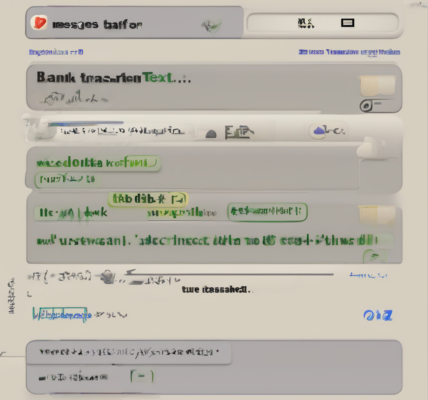Unlocking Financial Freedom: A Deep Dive into 0% Balance Transfer Cards
In the ever-evolving landscape of personal finance, navigating debt can feel like traversing a minefield. High-interest rates on credit cards can quickly snowball, making it challenging to pay down balances and achieve financial stability. This is where 0% balance transfer cards emerge as a potentially powerful tool, offering a lifeline to those seeking to consolidate and manage their debt more effectively. However, understanding the intricacies of these cards is crucial to harnessing their benefits and avoiding potential pitfalls.
Understanding 0% Balance Transfer Cards
A 0% balance transfer card, as the name suggests, allows you to transfer existing credit card balances to a new card with a promotional interest rate of 0% for a specified period. This introductory period, typically ranging from 6 to 21 months, provides a valuable opportunity to significantly reduce or eliminate interest charges, freeing up more of your monthly payments to pay down the principal balance. This accelerated payoff strategy can dramatically shorten the time it takes to become debt-free.
- Key Benefit: Reduced interest payments during the promotional period.
- Strategic Application: Consolidating high-interest debt into a single, lower-interest payment.
- Potential Drawback: Interest charges revert to the card’s standard APR after the promotional period expires.
Factors to Consider Before Applying
While the allure of 0% interest is undeniably attractive, it’s essential to approach balance transfer cards with a well-informed and strategic mindset. Carefully considering the following factors can prevent unforeseen financial complications and maximize the benefits of a balance transfer.
1. The Promotional Period
The length of the 0% promotional period is paramount. A longer promotional period provides more time to pay down the balance, reducing the overall interest paid. However, it’s crucial to create a realistic repayment plan to ensure the balance is paid off before the promotional period ends. Failing to do so will result in the accumulation of interest charges at the card’s standard APR, potentially negating any initial savings.
2. Balance Transfer Fees
Many 0% balance transfer cards charge a fee for transferring your balance. This fee is typically a percentage of the transferred amount, often ranging from 3% to 5%. While seemingly small, this fee can accumulate to a significant amount, especially with large balances. Carefully weigh the potential savings from reduced interest against the balance transfer fee to determine if the transfer is financially advantageous.
3. Annual Percentage Rate (APR) After the Promotional Period
Once the promotional period expires, the interest rate reverts to the card’s standard APR. This APR can be significantly higher than the rates offered by other credit cards, potentially leading to rapid debt accumulation if the balance isn’t paid off by the end of the promotional period. It’s essential to review the terms and conditions carefully to understand the post-promotional APR and its potential impact on your finances.
4. Credit Score Impact
Applying for a new credit card can temporarily lower your credit score, as the inquiry impacts your credit report. Furthermore, opening a new credit account also increases your credit utilization ratio (the amount of credit you use compared to your available credit). Both these factors could negatively affect your credit score, potentially hindering future borrowing opportunities. It’s crucial to assess the potential impact on your credit score before applying and only apply if you are confident in your ability to manage the new account responsibly.
5. Repayment Strategy
Before applying for a 0% balance transfer card, develop a comprehensive repayment strategy. Determine how much you can realistically afford to pay each month and create a detailed repayment schedule to ensure the balance is paid off before the promotional period expires. Regularly monitor your progress and make adjustments to your repayment plan as needed to stay on track.
Choosing the Right 0% Balance Transfer Card
Navigating the myriad of 0% balance transfer cards available can be overwhelming. To select the most suitable card for your specific needs, consider the following factors:
- Promotional Period Length: Prioritize cards offering longer promotional periods.
- Balance Transfer Fee: Compare fees across different cards to identify the lowest charges.
- Post-Promotional APR: Select a card with a competitive APR after the promotional period ends.
- Rewards Program: Consider cards offering rewards programs, such as cash back or points, to maximize benefits.
- Credit Requirements: Assess your credit score and eligibility criteria before applying.
Potential Pitfalls to Avoid
While 0% balance transfer cards can be beneficial, several potential pitfalls can negate their advantages. Being aware of these pitfalls and implementing appropriate strategies can help mitigate potential risks.
- Minimum Payments Only: Relying solely on minimum payments can prolong the repayment period and significantly increase the total interest paid, even with a 0% introductory rate. Aim for paying more than the minimum payment each month.
- New Purchases: Using the card for new purchases during the promotional period can dilute the benefit of the 0% interest rate. Focus solely on paying down the transferred balance to maximize savings.
- Ignoring the Expiration Date: Losing track of the promotional period expiration date can lead to significant interest charges once the 0% rate expires. Set reminders and create a repayment plan that ensures full payment before the expiration date.
- Overspending: The convenience of a 0% interest rate can tempt overspending. Maintain financial discipline and avoid accumulating new debt.
Alternatives to 0% Balance Transfer Cards
While 0% balance transfer cards are a viable option for many, they are not a one-size-fits-all solution. Consider these alternatives if a balance transfer card isn’t suitable for your circumstances:
- Debt Consolidation Loan: A personal loan can consolidate multiple debts into a single, fixed-rate payment, often with a lower interest rate than credit cards.
- Debt Management Plan (DMP): A DMP involves working with a credit counseling agency to negotiate lower interest rates and create a manageable repayment plan.
- Balance Transfer to a Lower-Interest Card (Non-0%): If securing a 0% card is difficult, transferring to a card with a lower interest rate than your current card can still offer significant savings.
Conclusion (Not included as per instructions)




